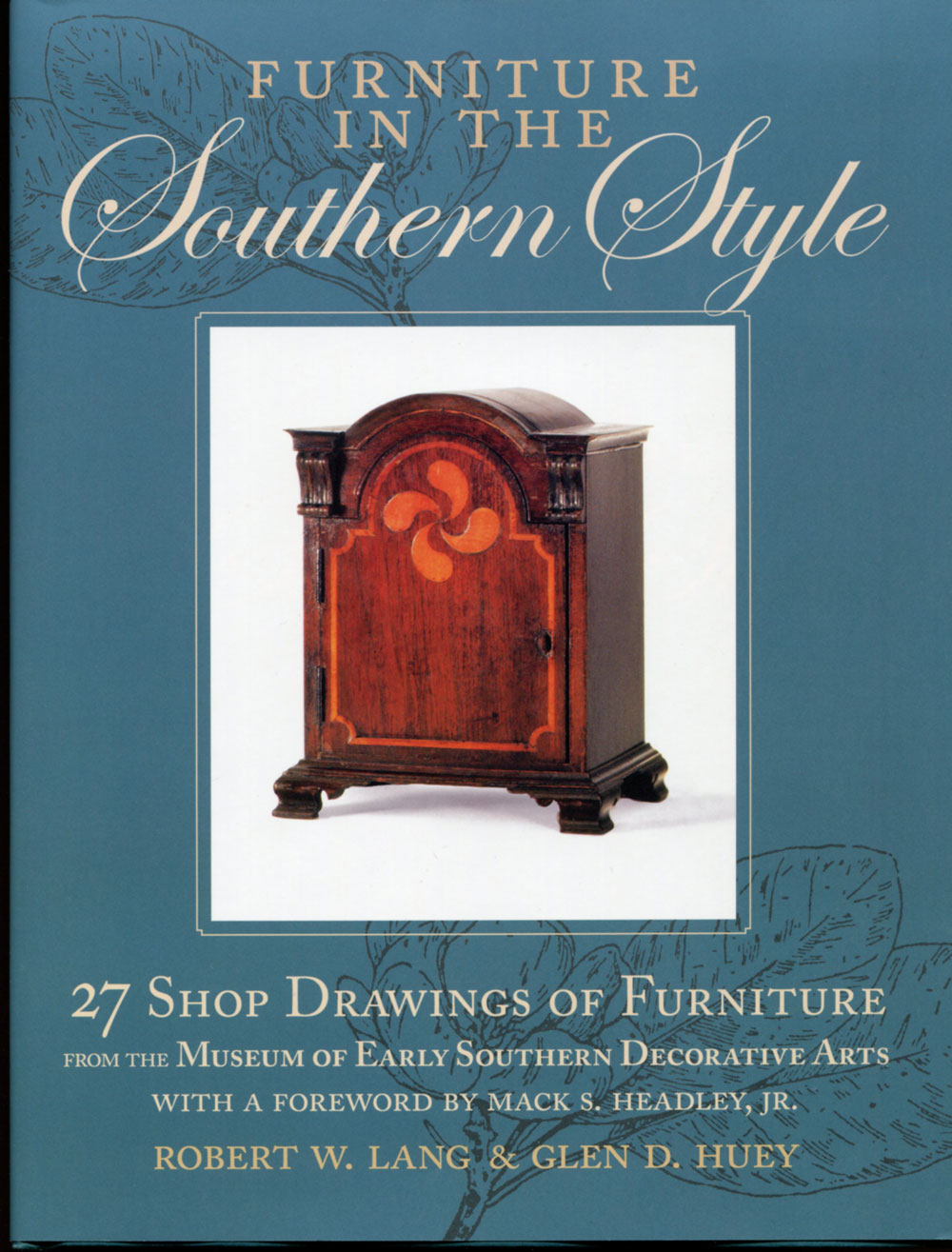
Furniture in the Southern Vernacular:
A Book Review of Lang and Huey,
Furniture in the Southern Style
by J. Norman Reid
Delaplane, Virginia
Though I'm an Ohio-born and raised Yankee at root, I've lived well over half my life below the Mason-Dixon line. And perhaps for this reason, I’ve developed a growing affinity for southern furniture and decorative arts. Living as I do near the Shenandoah Valley, I'm especially drawn to furniture forms produced in and around Winchester, Virginia, in the late 18th century. And so, when Lang and Huey's recent compilation of furniture drawings drawn from the massive holdings of the Museum of Early Southern Decorative Arts (MESDA) was released, I was quick to order a copy.
I was not disappointed. This nicely-bound volume contains complete shop drawings of 27 pieces representative of exemplars in the MESDA collections and research files, each accompanied by a black-and-white photo. The volume omits all consideration of the high style furniture of Charleston and other southern coastal centers or the work of furnituremakers whose careers have been chronicled elsewhere. Instead, it spotlights styles of furniture commonly found in typical 18th century and early 19th century homes in the rural South. As such, Lang and Huey make more accessible a category of American cabinetmaking that has been largely overlooked by scholars and furnituremakers alike.
Since much of the furniture documented in the MESDA files is in private hands, the authors developed their SketchUp models—the basis for their drawings—from file photos. Consequently, while the dimensions are faithful to the style of each piece and reflect these experienced woodworkers' estimates of construction techniques, they do not represent accurate measurements. This may matter little if, as Lang and Huey suggest, reproduction pieces incorporate further modifications to suit each builder's purposes. Accordingly, the authors make SketchUp drawings of each piece available separately to ease changes in design.
The included furniture examples range widely, from tables and chairs to case pieces, cellarettes and sideboards, blanket chests, a lady's desk, a cutlery tray, a pinwheel cabinet and a tall case clock. I have numerous favorites among the pieces, including a walnut side table dating about 1805, probably from Martinsburg, Virginia (now West Virginia) and featuring tapered legs, spade feet and arched aprons; a Kentucky sugar chest of cherry, walnut and poplar, circa 1800, with inlaid bellflowers and sand–shaded corner fans; a walnut and poplar blanket chest from Guilford County, North Carolina, dating from 1816, with bracket feet aligned outside the case so the molding becomes a structural as well as a decorative part; a delicate mahogany lady’s desk—less than 2 feet wide—from Wilmington, North Carolina, dating from 1795–1805; and a tall walnut case clock, circa 1820, from Salem, North Carolina—home of the MESDA—that trumps lack of decoration with straightforward design and great proportions.
The strength of this collection is the fact that the pieces are eminently buildable and will be at home in unpretentious settings. The appeal of these pieces can be enhanced by the builder through the choice of wood and the addition of details. The SketchUp models will make modifications easier to lay out.
The authors have made a valuable contribution by making the vernacular furniture of the 18th century rural south more accessible. This interesting and valuable collection fills a void in our understanding of 18th century furniture and increases the repertoire of the period to include the furniture most common to the era. Many woodworkers will conclude, as I did, that this fine volume, while perhaps not an "essential," nonetheless merits a place on their bookshelves.
Purchase your own copy of
Furniture in the Southern Style
for 25% off!
The author is a woodworker, writer and photographer living in Delaplane, Virginia, in the foothills of the Blue Ridge Mountains with his wife, four cats and a woodshop full of power and hand tools.
He can be reached by email at
nreid@fcc.net
.
Return to
Wood News
front page


